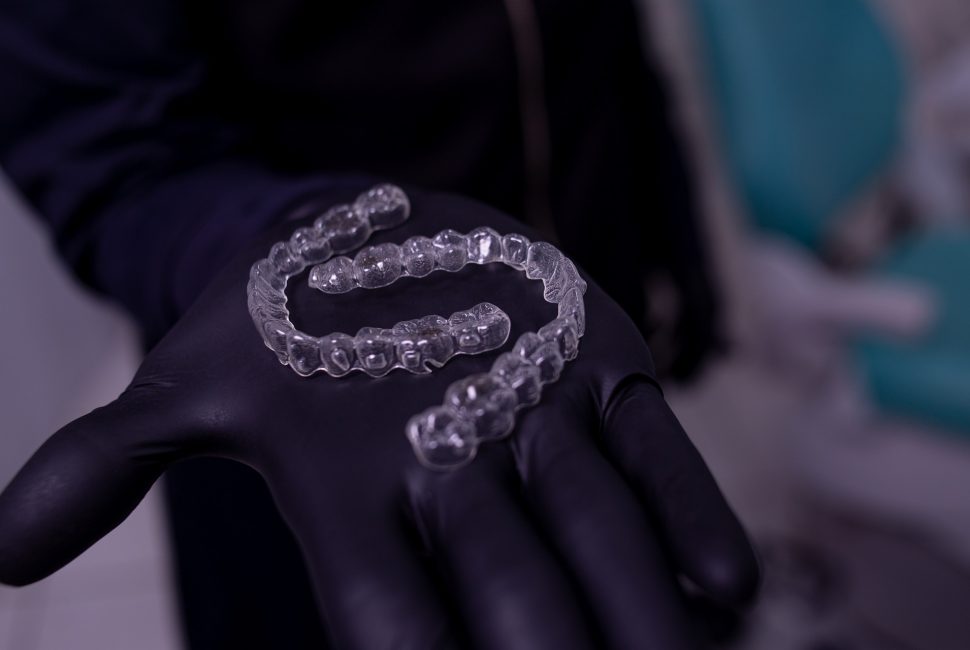Removable Braces: The What, The Why & The How

Straightening teeth with braces is an orthodontic practice employed all over the world for both children and adults. Several orthodontic treatments make use of removable braces to support whichever treatment is initially carried out.
Removable braces may be used independently if only small corrections to the malalignment of the teeth and mouth need to be made.
In this article, we explain what removable braces are, what sets them apart from other types of braces, and their pros and cons.
What Are Removable Braces?
In the simplest terms, removable braces are braces that you can take out of your mouth. Orthodontists usually employ removable braces in the form of a retainer after more extensive orthodontics or as the Invisalign, also known as corrective removable braces or “aligners”.
A study found that the perceived attractiveness of braces plays a major role in patients’ decisions when it comes to orthodontics. Removable braces, such as Invisalign, have been on the market since the late 90s and increase in popularity with every passing day. No doubt this has to do with the fact that braces you can take out and hide are the ideal situation for teens and adults undergoing orthodontic correction.
What Are the Differences Between Traditional, Fixed Braces and Removable Braces?
Essentially, removable braces allow patients to take them out when eating or cleaning their teeth, arguably making it the more attractive option for many patients. Traditional and fixed braces on the other hand are made up of brackets that are glued to your teeth and cannot be removed.
Both traditional, fixed braces and removable braces aim to achieve the same goal: straighter teeth and a healthier smile. However, while their attachment method is the main difference, they differ in other key aspects too:
- Effectiveness:
-
-
- Fixed braces: Highly effective for a wide range of orthodontic issues, including complex misalignments, bite problems, and crowded teeth.
- Removable braces: Best suited for mild to moderate cases of misalignment, minor gaps, and some bite issues. They may not be effective for complex corrections.
-
- Comfort and aesthetics:
-
-
- Fixed braces: Brackets and wires can cause initial discomfort and irritation, especially during adjustments. They are also quite noticeable, although options like clear brackets and ceramic wires can minimize this.
- Removable braces: Generally more comfortable than fixed braces, though some may experience slight pressure when switching to new aligners. They are nearly invisible, making them a popular choice for adults seeking a discreet treatment option.
-
- Compliance and care:
-
- Fixed braces: Require regular adjustments by an orthodontist and diligent oral hygiene to prevent food trapping around the brackets and wires. Certain foods may also need to be avoided.
- Removable braces: Reliance is on the user to wear the aligners for the prescribed amount of time each day. Brushing and cleaning the aligners themselves is also essential.
The Benefits of Removable Braces
When it comes to the pros and cons of braces, a huge factor is the restrictions patients need to apply to their lifestyles. Removable braces virtually eliminate the changes necessary with fixed braces.
1. No Need to Change Your Diet
Fixed braces require the wearer to completely cut out certain foods. Basically, any food that can be considered chewy, crunchy, hard and/or sticky is prohibited. Fixed braces will make some of the simplest pleasures, like biting into an apple, impossible.
Invisalign can be removed before eating and drinking so you can still enjoy popcorn and a candy apple whenever you please.
If your teeth are properly cleaned before putting the removable braces back in your mouth, no foods are off-limits.
2. Makes Cleaning Teeth Easier
Removable braces mean there is no foreign object blocking the path of a toothbrush or floss when cleaning your teeth. The fact that there is no obstruction when performing oral care and hygiene practices makes removable braces the obvious choice.
3. Less Discomfort
Fixed braces mean a lot of pressure is applied to the teeth and gums. This stress has been known to cause discomfort and even pain. When considering children who need orthodontic intervention, this may be the deciding factor between fixed and removable braces.
The absence of metal wires and brackets minimises the risk of irritation and discomfort in the mouth, especially for individuals with sensitive gums.
4. Almost Invisible
Removable braces can be taken out on say, picture day. If there is ever a situation you would like for the braces to be invisible, they can be removed. However, as the name suggests, Invisalign is invisible anyway!
The aesthetics of Invisalign far outweigh that of fixed braces because they are virtually undetectable.
5. Increased Self-Confidence
The near invisibility of removable braces allows for a more discreet treatment process. This can be particularly beneficial for adults or individuals who are self-conscious about their appearance and shy away from traditional metal braces. Increased self-confidence can positively impact social interactions and overall well-being.
Removable braces can minimize the social anxiety and awkwardness that some individuals might experience with traditional braces, especially teenagers. The ability to remove them for social events or photos can potentially enhance social interactions.
The Shortcomings of Removable Braces Compared to Fixed Braces
The primary issue with removable braces is also what makes them wonderful, they can be removed. This introduces a human factor that can lead to the Invisalign not being used properly.
1. They Cannot Correct Extreme Malalignment
It has been noted by many orthodontic professionals that Invisalign® is not an adequate treatment for complex malocclusions.
These complex malocclusions may require one of the many orthodontic options available, which can later be maintained by removable braces.
2. They Can Be Lost or Broken
It is not unheard of that once removable braces are taken out for whatever reason they can be damaged or lost.
It is advisable to keep your removable braces in a portable holder when eating to avoid them being thrown away while wrapped in a tissue or serviette.
Due to the invisible nature of Invisalign, they can be easy to lose. Keep them safe while cleaning your teeth by having a dedicated container in the bathroom for them.
3. Must be Worn 22 Hours Per Day
Unlike fixed braces, the success of removable braces relies heavily on the person’s discipline and willingness to keep them on for the recommended wear time.
For removable braces to be an effective orthodontic treatment, they must be worn for at least 22 hours per day. If you don’t follow this then your treatment will take a lot more time, or it might not even work at all!
Invisalign should only be removed when eating or cleaning your teeth.
4. Potential Speech Issues
Some users may experience temporary speech impediments when they first start wearing the aligners due to the presence of a foreign object in the mouth – and also the build-up of spit. However, this typically subsides within a few days once you’re used to them. Plus, you’ll find the same thing with fixed braces anyway!
Conclusion
Since removable braces cost more or less the same as fixed braces, the pros far outweigh the cons. If you only need minor orthodontic work done, Invisalign is a more carefree and comfortable option for children and adults alike.
The combination of benefits like improved hygiene, comfort, and aesthetics can contribute to a more positive overall experience with orthodontic treatment. This can lead to better compliance and potentially shorten overall treatment time.
If you’re considering getting removable braces such as Invisalign, then get in touch with our team of experienced orthodontists and book a free consultation with us today!


